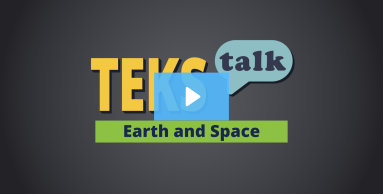
Knowledge and Skills Statement
The further explanation is designed to be a resource for educators that helps them better understand the topic their students are learning. Further explanations may be written at a more complex level than would be expected for students at the grade level.
Volcano Example: The lava that flows from volcanoes can create new land as it cools and solidifies. Over time, layers of hardened lava build up, forming volcanic mountains and islands. Additionally, volcanic ash and debris can be carried by wind and water, depositing sediment in surrounding areas and altering the landscape.
Earthquake Example: An earthquake can cause the creation of mountains, valleys, and rift zones. Earthquakes can also trigger landslides by destabilizing slopes and causing the movement of rocks and soil. students can gain a deeper appreciation for the dynamic nature of our planet and the powerful forces that shape its surface.
Landslide Example: A landslide occurs when large amounts of soil, rocks, or debris move down a slope. They can be triggered by various factors, including heavy rainfall, earthquakes, or human activities. Landslides can reshape the land by removing material from higher elevations and depositing it in lower areas. They can also create new landforms such as terraces and scarps. Additionally, landslides can block rivers, alter drainage patterns, and change the course of waterways.
This is a critical concept which will support students in later grade levels as they discuss abiotic factors that impact climate and ecosystem stability.
This is the first grade level at which students are introduced to the concept that changes to the Earth's surface may be rapid (or slow). In grade 3, students are expected to describe rapid changes. In grade 4, students will describe slow changes. Boundary: While grade 3 students are expected to model and describe these changes, in Tier 1 instruction, they are not expected to explain the tectonic processes that cause rapid changes.
Research
Mangiante, Elaine Silva. 2006. “What Happened to Our Volcano?” Science and Children 44, no. 4 (December 2006):34–39.
http://www.jstor.org/stable/43172902.
Summary: Teachers can use both in-class activities and field experience to help students witness evidence of change over time. This article explains how teachers can help students better understand Earth’s changes and how the place where they live has changed over time. In this article, the teacher introduces both constructive and destructive changes. Volcanic eruptions were focused on in this lesson, and many students were confused by the idea that these are considered constructive because of how much damage they cause. Volcanoes are a constructive change because they build more land mass. Students completed an in-class activity to simulate magma creating new land and watched videos of volcanoes. Students then took a field trip with a local geologist so they could both see the evidence of change to the land and hear an explanation as to what caused these changes.
